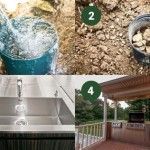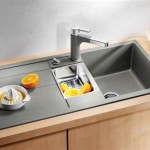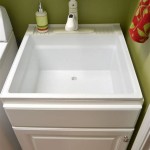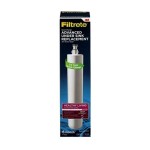How To Fix Leaking Sink
A leaking sink is a common plumbing problem that can be frustrating and costly if not fixed promptly. While some leaks are minor and can be easily repaired with a few simple tools, others may require the attention of a professional plumber. If you're not comfortable working on plumbing fixtures, it's always best to call in an expert.
Types of Sink Leaks
There are several different types of sink leaks, each with its own unique cause and solution. The most common types of sink leaks include:
- Faucet leaks: Faucet leaks are the most common type of sink leak. They can be caused by worn-out washers, O-rings, or seals.
- Drain leaks: Drain leaks occur when water leaks from the drainpipe or P-trap. They can be caused by loose fittings, cracked pipes, or clogged drains.
- Supply line leaks: Supply line leaks occur when water leaks from the pipes that supply water to the faucet. They can be caused by loose fittings, corroded pipes, or damaged hoses.
Tools and Materials You'll Need
Before you start repairing a leaking sink, you'll need to gather the following tools and materials:
- Wrench
- Pliers
- Screwdriver
- Allen wrench
- Replacement washers, O-rings, or seals
- Plumber's putty
- Teflon tape
- Bucket
- Rags
Step-by-Step Instructions
Once you have the necessary tools and materials, you can follow these step-by-step instructions to fix a leaking sink:
Faucet Leaks
- Turn off the water supply to the faucet.
- Remove the aerator, if there is one.
- Use a wrench to loosen the packing nut.
- Replace the washer, O-ring, or seal.
- Tighten the packing nut.
- Turn on the water supply and check for leaks.
Drain Leaks
- Turn off the water supply to the sink.
- Place a bucket under the drain to catch any water.
- Use a wrench to loosen the slip nut that connects the drainpipe to the P-trap.
- Remove the P-trap and clean out any debris.
- Apply a new bead of plumber's putty to the threads of the slip nut.
- Reinstall the P-trap and tighten the slip nut.
- Turn on the water supply and check for leaks.
Supply Line Leaks
- Turn off the water supply to the sink.
- Use a wrench to loosen the nuts that connect the supply lines to the faucet.
- Remove the old supply lines and replace them with new ones.
- Tighten the nuts and turn on the water supply.
- Check for leaks.
Tips for Preventing Sink Leaks
Here are a few tips for preventing sink leaks:
- Check your faucets and drains regularly for leaks.
- Tighten any loose nuts or bolts.
- Replace worn-out washers, O-rings, and seals.
- Clean your drains regularly to prevent clogs.
- Avoid using harsh chemicals on your sink fixtures.

4 Simple Ways To Fix A Leaky Sink Drain Pipe Wikihow

How To Replace A Kitchen Sink Drain Strainer Repair Leak
How To Fix A Leaking Sink Without Plumber Quora

4 Simple Ways To Fix A Leaky Sink Drain Pipe Wikihow

How To Fix Or Replace A Leaky Sink Trap Hometips

Quick Tip For A Kitchen Sink Drain That Is Leaking

How To Remove A Leaky Pipe Under The Kitchen Sink Wellsons

Properly Fixing A Leaky Sink Faucet Wallside Windows

Leak How To Fix Leaking Bathroom Sink Drain Where Pvc Meets Abs Connection Home Improvement Stack Exchange

4 Simple Ways To Fix A Leaky Sink Drain Pipe Wikihow







